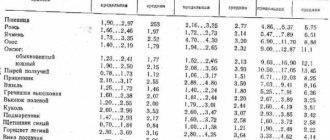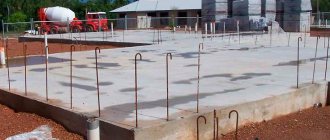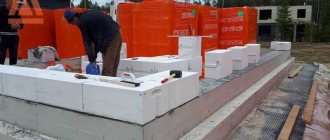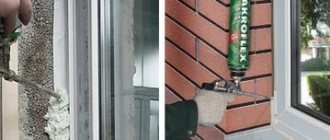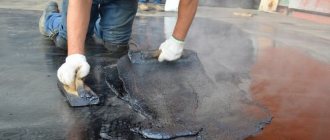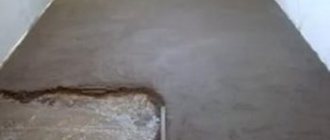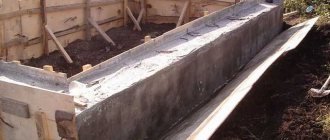Hygrometers are devices whose main function is to measure humidity. This indicator affects human health, the operation of many devices, and the properties of materials, so the need to control it may arise in various industries. During the use of the hygrometer, various principles of operation were developed and became widespread.
Types of hygrometers
There are several methods for measuring humidity. Absolute humidity characterizes how much water vapor that is currently contained in a cubic meter of atmosphere weighs. Relative humidity is a characteristic that shows how close the amount of moisture contained in the air at the time of measurement is to the maximum possible for a given temperature. It is measured as a percentage and is often used to describe the weather conditions. Finally, in addition to absolute and relative humidity, a hygrometer can determine the dew point - the temperature at which water vapor contained in the air condenses on a cold surface.
As a rule, measuring equipment determines one of the three listed indicators. However, there are formulas that allow you to obtain the remaining two using calculations. So, regardless of whether your hygrometer measures dew point, absolute or relative humidity, you can calculate all three when needed.
During the existence of the hygrometer, several methods have been developed to determine air humidity. They differ in the accuracy of the data obtained and in the scope of application.
Hair hygrometers measure by changing the length of a fine hair in response to the amount of moisture it comes into contact with. The device has certain limitations - measurements are carried out only in the range from 30 to 80%. Humidity indication is carried out through a simple mechanism. Changes in microclimate affect the hair, the tension of which increases or decreases. It acts on the pulley to which it is connected. The pulley turns and moves the pointer along an arc-shaped scale. Since the operation of such a hygrometer is determined solely by the laws of mechanics, it does not require an external power source.
To determine the absolute humidity of the air, a weighing hygrometer is used. It consists of tubes bent in the shape of a U, connected to each other and filled with a substance with good hygroscopicity, that is, it actively absorbs moisture from the air. A fixed amount of air is blown through the described tube system. The moisture contained in it settles on the contents of the tubes, and their mass changes. The difference between the mass of the tube system before and after taking measurements allows you to calculate how much moisture is present in a given volume.
The operation of a mechanical (ceramic) hygrometer is based on a change in the electrical resistance of a mass containing ceramic and metal components. The base is silicon, clay or kaolin, to which metal oxides are added. The result is a mixture that noticeably changes resistance in response to changes in humidity. Hygrometers of this type are often used in everyday life.
A condensation hygrometer provides more accurate data than the mechanical instruments described above. The design of such a device includes a cooled surface on which moisture condenses. The built-in thermometer records the temperature at which condensation occurred, and a narrow beam of light directed at the mentioned surface allows you to accurately record the moment of condensation formation. Based on this data, the electronics calculates the relative humidity and displays it on the display. This principle of operation allows you to reduce the error to a minimum, performing measurements in the range from 0 to 100%.
Electronic hygrometers can use a variety of operating principles, including:
- measuring the electrical conductivity of air, which depends on the moisture it contains;
- determination of dew point by optoelectronic method;
- measuring the electrical resistance of salts or polymers, which changes depending on humidity;
- monitoring changes in the capacitance of a metal oxide or polymer capacitor.
All of these methods provide more accurate data than using a mechanical hygrometer. An electronic hygrometer gives less error and is especially convenient if further processing of the collected data is necessary.
A psychrometric hygrometer is used to measure the relative humidity of the air by comparing the readings of two thermometers, one of which is placed in a humid environment. Since the wet one will cool due to the evaporation of the liquid, it will show a lower temperature than the control one. Moreover, the less moisture in the air, the more the thermometer readings will differ. Relative humidity is determined using a special table, and on its basis, if necessary, absolute humidity is calculated.
Based on this principle, several types of psychrometers operate:
- The stationary one is a simple structure mounted in a meteorological booth. Two thermometers are mounted on a tripod, one of which is in contact with a damp cloth. Readings and calculations are done manually.
- The remote is constructed using temperature transducers such as thermistors or thermocouples. For example, such a psychrometer may consist of two manometric thermometers, one of which is humidified. A remote psychrometer can be manometric or electrical.
- The aspiration thermometer consists of two thermometers mounted in a protected housing and blown by an aspirator fan. This design allows for the highest measurement accuracy.
What is a hygrometer?
A hygrometer is a measuring device designed to determine the relative humidity of the air. It is used to maintain an optimal indoor microclimate. At the moment, there are several types of devices:
- psychrometric. It has two thermometers, the difference in readings of which allows you to calculate air humidity;
- hair. Its design contains fat-free human hair, which tends to straighten or vice versa – curl – when air humidity changes;
- electronic. Most often chosen by consumers due to its ease of use - all data is immediately displayed on a digital display;
- condensation It is characterized by relatively large dimensions and is capable of producing the most accurate results.
A condensation hygrometer is a precision instrument that is famous for its high measurement accuracy. Its use allows you to obtain accurate data on the indoor microclimate.
Scope of application of hygrometers
Problems requiring humidity control often arise in various industries. Modern manufacturers produce hygrometers designed for specific specific applications, which means they are best suited for use in a particular field of activity. Here are just a few examples of situations that can be solved using these measuring instruments:
- For long-term storage of agricultural products, for example, in vegetable stores or granaries, it is necessary to maintain temperature and humidity conditions. This can be achieved by constantly monitoring the microclimate using a hygrometer.
- Many medications require special storage conditions and may lose their properties if they are exposed to excess humidity.
- A hygrometer is also necessary in a library, since books, especially old ones, deteriorate much faster in a humid microclimate. Materials that are many years old can deteriorate from excess moisture, which means that air humidity needs to be controlled to ensure optimal storage conditions.
- The need to control the moisture content of materials often arises at a construction site. For example, the degree of drying of wood is checked to determine whether and how it can be used as a building material. There are also specialized hygrometers designed to determine the moisture content of concrete.
- Checking the moisture content of materials is often carried out during the production of furniture, because a product made from too damp or overdried wood was produced in violation of the technology and, most likely, will last much less.
Hygrometer: instructions for use
Hygrometer VIT-2
To have a clear idea of modern psychrometric hygrometers, consider the instructions for using VIT-1 and VIT-2:
- The VIT-1 psychrometer measures the level of air humidity at temperatures from -5C to +25C. It is used for measurements inside residential premises, as well as industrial, warehouse, greenhouse and poultry farms. As mentioned above, on the front panel of the hygrometer there are two thermometers with a measurement scale, as well as a psychrometric table with the main technical parameters of the psychrometer and the ranges of possible absolute error. Looking at the instructions, it is mentioned that inside the feeder there should always be distilled water in accordance with GOST. First, you should determine the air temperature using the thermometer located on the left, then round it to the nearest whole number in degrees Celsius. Taking into account the readings of the “wet” thermometer, which shows the rate of moisture evaporation, the difference between the previously obtained and these values should be calculated. Next, knowing the indicator, find it using the psychrometric table. Please note that there are two tables on the hygrometer panel: the top one is used when the maximum difference between the values of two thermometers is up to 5.5 C, and the bottom one is up to 11 C.
Using the table to find the value is simple: in the leftmost column you should find the reading indicated by the “dry” bulb, and at the top select the value obtained as a result of the difference between the values of the “dry” and “wet” bulbs. The intersection point of these two indicators will indicate the percentage of air humidity level.
- Instructions for using the psychrometric hygrometer VIT-2 do not differ from the first one. The “wet” thermometer of the VIT-2 psychrometer contains toluene instead of distilled water, as in the first case. The content of this thermometric liquid determines the list of measures that cannot be taken:
- Subject the device to sudden shocks and impacts.
- Wipe the scale of both thermometers with products using acids and alcohol-containing liquids.
- Expose devices to heat above 45 C.
- Toluene is toxic and flammable and should be handled with care if the wet bulb is destroyed.
- The hygrometer should be transported only with the device in a vertical position.
The device can only be used indoors, when the air temperature in the warm season does not exceed 40C, and in the cold season does not fall below -15C.
The measurement range of relative air humidity depends on the ambient temperature. So, at 20-23C, the range of measurement of relative humidity in% will be 54-90, and at 23-26C – 40-90. Accordingly, at 26C and above the indicator will change by 20-90%. The accuracy of the psychrometer readings is ensured by the fact that the division price is only 0.2 C. Just like the VIT-1, the VIT-2 device consists of two thermometers with a glass feeder and a psychrometric table. The feeder reservoir is moistened with water, after which readings are taken from both thermometers. Based on the difference in the readings of the “dry” and “wet” thermometer, the value according to the numbers indicated in the table is determined. When taking readings, the device should be held strictly vertically at eye level. The minimum exposure time of the psychrometer is 30 minutes.
Portable
The main areas of application for portable hygrometers are the oil and gas and petrochemical industries. Using such a device, the microhumidity of gas in cylinders or pipelines is determined. They can operate over a wide temperature range and output humidity in different units of measurement. The compactness of the hygrometer allows you to easily take measurements at the right points.
How to choose?
To make using the device convenient and fast, you need to choose it correctly. For each room there are certain air humidity standards. Based on these data, you can select a model that can measure humidity in this range. For the bedroom, nursery and living room, a range of 20-80% will be sufficient. Various utility rooms (attic, closet), as well as the kitchen, require the installation of a device that can measure readings in the range of 10-90%. If you plan to install it in a bathhouse, sauna or bathroom (in all rooms with high humidity), then you need to choose a device with a measurement range of 0-100%. Also, when installing a hygrometer in a sauna or bathhouse, you need to pay attention to its maximum operating temperature. The optimal indicator would be possible heating up to 120 degrees Celsius.
When choosing the presented unit, you also need to pay attention to its size. Due to the special principle of operation, the dimensions of the device differ markedly from the dimensions of similar devices. If you plan to install the unit in a residential area, it is better to choose a device that has the smallest dimensions. If this is not possible, you must choose the correct location for the device, protecting it from mechanical influences.
Another important selection factor is the availability of additional functions. Some devices, in addition to measuring relative humidity, can measure air temperature. They can also display the smallest and largest values they have obtained over the entire measurement period. If these features are not needed, it makes sense to choose a cheaper option without overpaying for additional options.
Stationary
Stationary hygrometers allow not only to take measurements, but also to control technological processes. The design of the device allows you to detect even a small percentage of microhumidity. The sensor heating system makes measurements more accurate because it prevents exposure to drying agents that may be contained in the gas mixture.
Scope of application of professional hygrometers
Portable and stationary humidity measuring instruments are used primarily in the oil and gas and chemical industries. However, the scope of their use is not limited to this. A hygrometer may be needed wherever you are supposed to work with non-aggressive gas mixtures and you need to monitor their condition. Thanks to this, equipment for measuring the percentage of moisture in the air is used at nuclear power plants, in the production of microelectronics, and in the energy sector. They are also used to control the drying process of natural gas.
Professional hygrometers are used to solve a wide range of problems related to the organization of various production processes. In particular, they become indispensable if necessary:
- provide a given level of humidity in the room, for example, for storing products under certain conditions;
- assess the humidity in the production area for labor protection purposes;
- ensure the normal functioning of electrical equipment for various purposes;
- provide the level of humidity required for the implementation of a specific production process.
Measuring indoor air humidity: basic methods and instruments
Before choosing the optimal moisture measuring device, you need to familiarize yourself with the principles of its operation. The main classification can be distinguished:
- hygrometers;
- psychrometers.
Despite the common end goals, the operating principles of a psychrometer and a hygrometer are different.
You can change the humidity using your grandmother's primitive methods - a glass filled with liquid using a thermometer or a fir cone, the scales of which open if the air is too dry.


